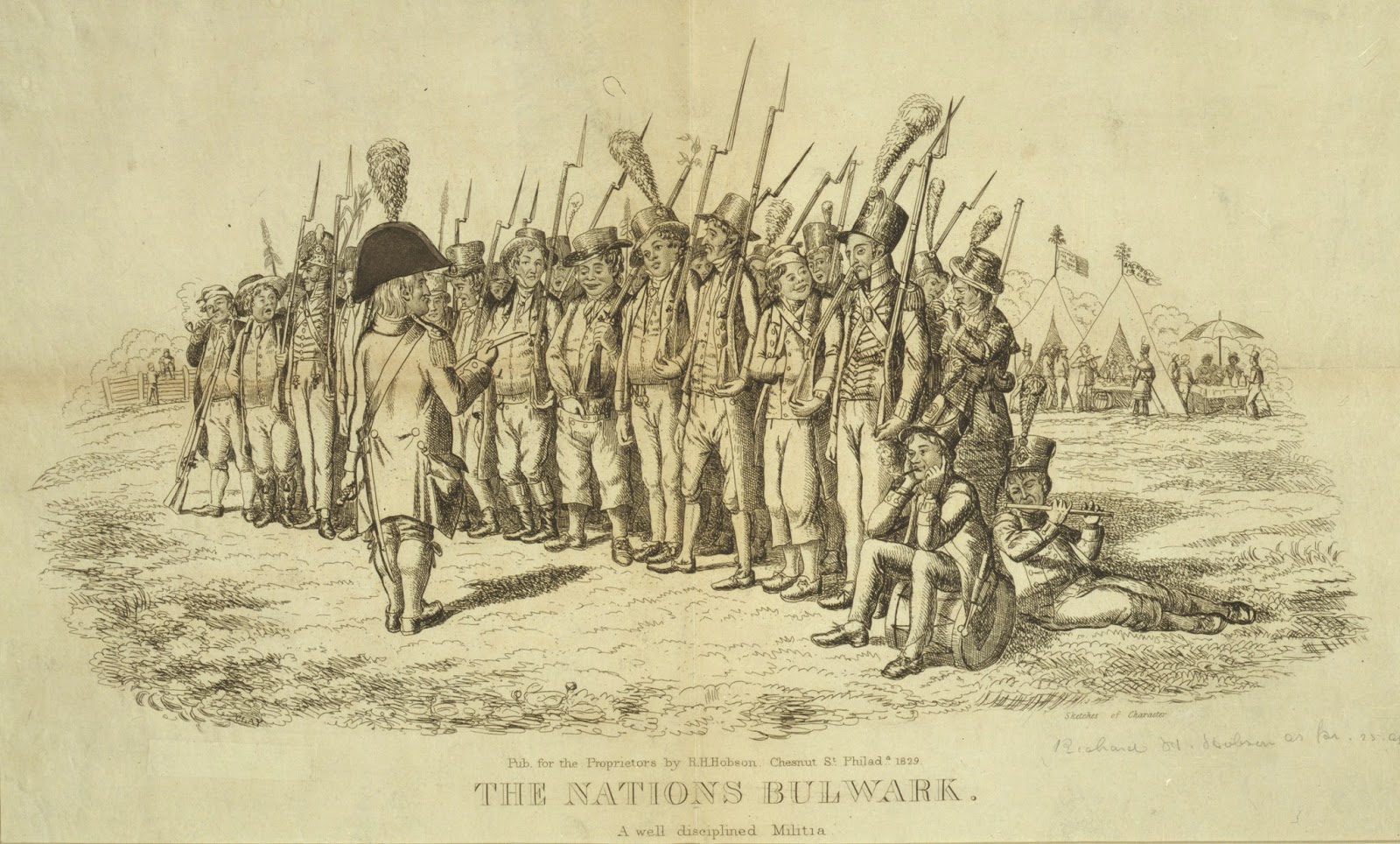I always wanted a short and sweet history of America in the 1800s, but I couldn’t ever seem to find one. After writing this (and the next few) episodes, I now know why this history doesn’t exist. There is just a lot going on.
So much of the early nineteenth century feels so alien. Public hangings as popular entertainment? Rusk cakes sold by children at tea time? Militias training in the streets?
And then some of that history feels very familiar. Economic inequality that makes life dangerous for the most vulnerable. Scraping by with a street hustle. Unfair and humiliating burdens placed on the working class.
But there are changes coming to Philly streets. And this episode is about understanding how big those changes will be.
Pivot Point No. 1: The Most Vulnerable
There are two pivot points in this story. Moments where you are seeing one thing, but as it comes into focus, you can also see a distorted, mirror image of something ugly going on.
The first pivot point is the Black chimney sweep calling out “Sweep-o-o-o,” working the street with his two soot-covered young apprentices. This is more than just a colorful image of days gone by, when the streets offered opportunities to make a living. The young apprentices represent some of the most vulnerable residents of Philadelphia in the Early Republic: free, young Black boys kidnapped on the city streets of the north and sold into slavery in the south. Their story has been told by historian Julie Winch in her 1987 article in The Pennsylvania Magazine of History and Biography, and in Richard Bell’s 2020 book Stolen.
Pivot Point No. 2: Poverty on Display
The second pivot point is the public militia marching down Philly’s streets on parade to celebrate July 4th. This feels festive and familiar. But the inequitable, and compulsory, public militia system that is on display here was a major source of simmering class tension. The wealthy could pay their way out, or buy themselves a swanky officer rank. But the working class was forced to muster and march, buy their gear, and take unpaid leave from work.
The working class would get their own back with rowdy street parodies. Philadelphia’s irreverent fantastical militias were wildly popular in the Early Republic, especially because they really irritated the establishment. And the tatters of these working-class parodies influenced the Christmas time street revelries that, in turn, evolved into Philly’s mummer tradition of today.
Sources Cited:
Allinson, Edward P. and Boies Penrose. Philadelphia 1681-1887: a History of Municipal Development. Baltimore, Publication Agency of the Johns Hopkins University. Allen, Lane & Scott, 1887.
Baker, H. Robert. “Personal Liberty Laws.” Essential Civil War Curriculum. https://www.essentialcivilwarcurriculum.com/personal-liberty-laws.html
The Cries of Philadelphia. Philadelphia: Johnson and Warner, 1810.
Davis, Susan G. Parades and Power : Street Theatre In Nineteenth-century Philadelphia. Berkeley, Calif.: University of California Press, 1988.
Davis, Susan G. “‘Making Night Hideous’: Christmas Revelry and Public Order in Nineteenth-Century Philadelphia.” American Quarterly, vol. 34, no. 2, Johns Hopkins University Press, 1982, pp. 185–99, https://doi.org/10.2307/2712609.
Kahan, Michael. Pedestrian Matters: The Contested Meanings and Uses of Philadelphia’s Streets, 1850s-1920s. Dissertation. University of Pennsylvania. 2002.
Klepp, Susan E. “Demography in Early Philadelphia, 1690-1860.” Proceedings of the American Philosophical Society, vol. 133, no. 2, 1989, pp. 85–111. JSTOR, http://www.jstor.org/stable/987041. Accessed 9 Jun. 2022.
Koschnik, Albrecht. “Political Conflict and Public Contest: Rituals of National Celebration in Philadelphia, 1788-1815.” The Pennsylvania Magazine of History and Biography, vol. 118, no. 3, 1994, pp. 209–48, http://www.jstor.org/stable/20092875. Accessed 14 May 2022.
Nash, Gary B. First City: Philadelphia and the Forging of Historical Memory, University of Pennsylvania Press, 2006, http://www.jstor.org/stable/j.ctt3fj3c5.4.
Newman, Simon P. Parades and the Politics of the Street: Festive Culture in the Early American Republic. Philadelphia: University of Pennsylvania Press, 1999.
Okur, Nilgun Anadolu. “Underground Railroad in Philadelphia, 1830-1860.” Journal of Black Studies, vol. 25, no. 5, Sage Publications, Inc., 1995, pp. 537–57, http://www.jstor.org/stable/2784630.
Ratcliff, Donald. “The Right to Vote and the Rise of Democracy, 1787-1828.” Journal of the Early Republic, 33 (Summer 2013), 219-254.
Royall, Anne Newport, and Joseph Meredith Toner Collection. Sketches of history, life, and manners in the United States. New Haven: Printed for the Author, 1826. Pdf. Retrieved from the Library of Congress, www.loc.gov/item/02000382/:
Scharf, J. Thomas. History of Philadelphia, 1609-1884. Michigan: L.H. Everts, 1884.
Shammas, Carole. “The Space Problem in Early United States Cities.” The William and Mary Quarterly, vol. 57, no. 3, 2000, pp. 505–42: 512. JSTOR, https://doi.org/10.2307/2674264. Accessed 9 Jun. 2022.
Shankman, Andrew. “Malcontents and Tertium Quids: The Battle to Define Democracy in Jeffersonian Philadelphia.” Journal of the Early Republic, vol. 19, no. 1, [University of Pennsylvania Press, Society for Historians of the Early American Republic], 1999, pp. 43–72, https://doi.org/10.2307/3124922.
Sivits, Paul, and Billy G. Smith. “Philadelphia and Its People in Maps: 1790s.” The Encyclopedia of Greater Philadelphia Website, 2012. https://philadelphiaencyclopedia.org/archive/philadelphia-and-its-people-in-maps-the-1790s/#4091
Smith, Billy G. “Inequality in Late Colonial Philadelphia: A Note on Its Nature and Growth.” The William and Mary Quarterly, vol. 41, no. 4, Omohundro Institute of Early American History and Culture, 1984, pp. 629–45, https://doi.org/10.2307/1919157.
Smith, Billy G. and Paul Sivitz. “Identifying and Mapping Ethnicity in Philadelphia in the Early Republic.” The Pennsylvania Magazine of History and Biography, vol. 140, no. 3, 2016, pp. 393–411. JSTOR, https://doi.org/10.5215/pennmaghistbio.140.3.0393. Accessed 9 Jun. 2022.
Snead, James E., Erickson, Clark L., and Darling, J. Andrew, eds. Landscapes of Movement : Trails, Paths, and Roads in Anthropological Perspective. Philadelphia: University of Pennsylvania Press, 2009. Accessed December 16, 2021. ProQuest Ebook Central.
Warner, Sam Bass. The Private City: Philadelphia in Three Periods of Its Growth. Philadelphia, PA: University of Philadelphia Press, 1968.
Winch, Julie. “Philadelphia and the Other Underground Railroad.” The Pennsylvania Magazine of History and Biography, vol. 111, no. 1, Historical Society of Pennsylvania, 1987, pp. 3–25, http://www.jstor.org/stable/20092072.
